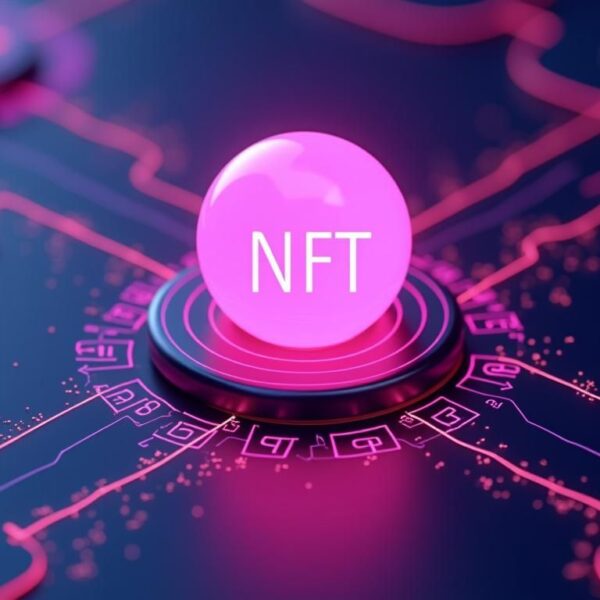As the digital marketplace evolves at a breathtaking pace, traders are increasingly turning to automated trading software to maintain their edge. With the rise of crypto trading bots, the ability to enact complex trading strategies around the clock has become not only desirable but essential. The modern trader’s toolkit is now incomplete without considering the sophisticated algorithms that power these intelligent assistants. In our journey through the high-tech world of automated trading, we’ll examine the features, benefits, and user experiences of leading bots such as 3Commas, Pionex, Oktobot, Altrady, KryptoHopper, and Bitsgap. Whether you’re a seasoned investor or new to the field, our trading bot reviews will give you unparalleled insight into optimizing your trading strategies with this cutting-edge technology.
Understanding Automated Trading and Its Advantages
The concept of automated trading systems, also known as algorithmic trading, encompasses the use of complex AI-driven algorithms to manage buy and sell orders. These systems are designed to execute trades at optimal times based on predefined criteria, without the need for manual intervention. As a result, traders who leverage such technologies often observe a substantial improvement in efficiency in trading.
One of the most significant advantages of automated trading is its ability to process vast amounts of data and execute orders almost instantaneously. High-frequency trading, a subset of algorithmic trading, exemplifies this where milliseconds can make a significant difference in the outcome of trades. By minimizing the delay between market analysis and action, automated systems mitigate the risk of slippage – a common pitfall in manual trading.
- **Around-the-Clock Trading:** Automated systems operate tirelessly, capitalizing on opportunities even when the trader is away from their screens. This constant operation provides a distinct advantage in the 24/7 cryptocurrency markets.
- **Reduced Emotional Decision-Making:** Bots adhere strictly to the strategies they are programmed with, eliminating the variance introduced by a trader’s psychological and emotional state.
- **Complex Strategy Implementation:** Some trading strategies are too intricate to execute manually. Automated systems, with their ability to monitor multiple markets and timeframes, excel in applying these sophisticated tactics.
As a result, both novice and seasoned traders are embracing automated trading systems for their enhanced capabilities in decision-making and strategy implementation. By entrusting the analytical work to bots, individuals can focus on refining their strategies and identifying new opportunities.
Lastly, it is crucial to acknowledge that, while automated trading offers numerous benefits, it also requires thorough understanding and regular oversight to maintain its efficacy. Choosing the right parameters and adjusting them in response to changing market conditions is paramount to the successful application of any automated trading system.
How Trading Bots Revolutionize Investment Strategies
With the advent of trading bot technology, the investment landscape has been transformed, offering dynamic and innovative trading strategies that were once the preserve of highly skilled professionals. Today’s trading bots have fundamentally shifted the paradigm, introducing a level of market adaptation and strategic execution that is reshaping how individuals and institutions invest.
At the core of this evolution is the ability of bots to analyze and react to market conditions with unprecedented speed. Driven by sophisticated algorithms, these tools enable traders to implement complex strategies that can adapt in real-time to changes in the market—thus fostering a trading environment that is both agile and strategic.
- **Market Adaptation:** With real-time analysis and decision-making capabilities, trading bots allow for rapid adaptation to volatile market conditions, ensuring investment strategies remain relevant and effective.
- **Sophisticated Strategy Execution:** Automating the trading process enables the execution of trades based on advanced technical indicators and statistical models that can be difficult for humans to process as quickly and accurately.
- **Accessibility:** These tools democratize financial markets, granting both novice and experienced traders access to powerful mechanisms that were once available only to institutions or individuals with extensive resources.
The integration of trading bot technology has empowered traders to craft and apply tailored strategies that align with their investment goals and risk tolerance. From portfolio diversification to risk-reduction and high-frequency trading, the applications are vast and continue to develop with technological advancements.
However, while the capabilities of bots appear transformative, it is essential to recognize the balance required in using such tools. Effective market adaptation often necessitates oversight and the ability to finetune bot parameters in response to the unpredictable nature of financial markets.
In conclusion, as we delve deeper into the capabilities and successes of various trading bots, it becomes clear that these automated assistants are more than mere tools; they are game-changers that enable traders to leverage market adaptation, engage in more innovative trading strategies, and exploit the full potential of trading bot technology.



What to Look For in a Trading Bot: Features and Functions
When venturing into the realm of automated trading, opting for the right trading bot can make a significant difference in your investment journey. An ideal trading bot should not only align with your trading style but also ensure robust security and offer an intuitive user interface. Below, we discuss key functions and features that are indispensable in high-quality trading bot software.
Determining Your Trading Style and Bot Compatibility
Before choosing a trading bot, it’s crucial to identify your specific trading style and objectives. Are you aiming for long-term investments, or do you prefer the rapid pace of day trading? Some bots provide stellar performance in high-frequency trading environments, whereas others may excel in delivering consistent results over longer holding periods. Attributes to consider include:
- Strategy Implementation: Choose a bot capable of executing the types of strategies you prefer, such as those based on technical analysis indicators or arbitrage opportunities.
- Customizable Trading Software: Look for bots that offer a high degree of customization to tailor your trading algorithms to your personal strategies and risk tolerance.
- Asset Variety: Make sure your bot supports the assets you’re interested in trading, such as a wide range of cryptocurrencies, stocks, forex, or commodities.
Assessing bot compatibility can significantly impact the effectiveness and efficiency of your automated trading processes.
Security Measures and Why They’re Critical
In the digital trading world, security is paramount. Secure trading platforms are not just a preference; they are a necessity to protect your funds and personal information from cyber threats. Trading bots should have a solid security framework to prevent unauthorized access and potential hacking. Features to prioritize include:
- Two-Factor Authentication (2FA): This adds an extra layer of security beyond just username and password.
- Encryption: Encryption of data both in transit and at rest ensures that your sensitive information is safeguarded from interception.
- API Key Permissions: Setting proper permissions for the bot’s API key can restrict access, preventing withdrawals or transfers without your authorization.
Ensuring that these security measures are in place can offer peace of mind and protect your assets from the evolving threats that lurk within the online trading space.
User Interface and Ease of Use
An intuitive and user-friendly interface is also a key feature of a quality trading bot, as it can greatly enhance your trading experience. A well-designed interface should facilitate easy navigation and interpretation of complex data, making it simpler for you to make informed decisions. Key considerations include:
- Clarity: The platform should present information in a clear and concise manner, avoiding unnecessary complexity.
- Dashboard Customization: Dashboards that are customizable allow you to monitor the trading metrics that matter most to you.
- User Support and Tutorials: The presence of comprehensive user guides, tutorials, and responsive customer support can be invaluable, especially when you first begin trading with a new bot.
An effective user interface can diminish the learning curve and enable both novices and experts alike to harness the full potential of trading bot features.
The ideal trading bot integrates seamlessly with your trading style, provides an ironclad security framework, and offers a user experience that simplifies complex trading activities. As you explore the diverse landscape of automated trading solutions, consider these key features to ensure your chosen trading bot positions you for success in the markets.
The Art of Setting Up Trading Bots for Optimal Performance
Mastering bot configuration is akin to fine-tuning a high-performance engine; every adjustment can significantly influence the outcome. In the realm of automated trading, success hinges on setting up trading bot optimization to match individual trading objectives, utilizing data-driven approaches to automated strategy execution.
To propel trading bots towards peak efficiency, attention to detail in the setup process is paramount. Here are the pivotal steps for calibrating your trading bot:
- Define Trading Objectives: Establishing clear goals provides direction for how the bot should operate, influencing factors such as risk level and asset allocation.
- Select Appropriate Strategies: Whether prioritizing arbitrage, market-making, or trend-following, select strategies that align with your goals.
- Adjust Risk Parameters: Tailor stop-loss, take-profit, and drawdown limits to fit your risk tolerance.
- Backtest Strategies: Validate strategies against historical data to gauge potential effectiveness before live execution.
- Monitor and Modify: Regularly review bot performance and adjust configurations to adapt to market changes.
In-depth understanding of each parameter is essential to unlock the full capabilities of trading bots:
| Parameter | Description | Impact on Bot Performance |
|---|---|---|
| Entry/Exit Points | Criteria that determine when to enter or exit trades | Directly influences timing and profitability of trades |
| Position Sizing | Amount invested or percentage of portfolio allocated to each trade | Affects exposure to market volatility and potential returns |
| Market Indicators | Technical tools used to predict market movements | Provides signals that guide strategic trade decision-making |
| Frequency of Trades | How often the bot will initiate trades | Shapes the trading style – from high-frequency to long-term positioning |
| API Key Permissions | Access rights given to the bot for executing trade orders | Ensures security while allowing necessary actions for trade executions |
Embracing the artistry behind trading bot optimization not only amplifies the effectiveness of your automated systems but also enhances the overall trading experience. A meticulously configured bot is a powerful ally in navigating the complexities of the markets with precision and agility.
Best Trading Bots: 3Commas, Pionex, Oktobot, Altrady, KryptoHopper, Bitsgap
As the cryptocurrency market continues to mature, traders around the world are in constant search of tools that can give them an edge. In this segment, we delve into a comparative analysis of some of the top crypto trading bots that have made a significant impact on the industry: 3Commas, Pionex, Oktobot, Altrady, KryptoHopper, and Bitsgap. These platforms stand out for their capabilities as multi-exchange bots and their prowess in offering cloud-based trading bot platforms. Let’s explore the distinctive aspects that make each of these bots unique.
3Commas: Versatility Meets User-Friendly Design
3Commas is admired for its versatility and intuitive design, serving both novice and expert traders. Its ability to connect with numerous exchanges and its assortment of automated trading strategies cater to a broad audience. Users can access features like portfolio management tools, social trading options, and robust analytics that maximize the bot’s utility in various market conditions.
Pionex: Embedded Bots with Exchange Functions
Pionex stands apart as an exchange that integrates its own suite of automated trading bots. Users benefit from the direct incorporation of features such as grid trading and arbitrage bots without the need for separate API integrations. This built-in functionality simplifies the trading process and provides an added layer of convenience and efficiency.
Oktobot: The Newcomer with Promise
While newer to the scene, Oktobot is already turning heads with its promise of advanced features and user-friendly experience. It aspires to streamline complex trading strategies and make them accessible to a wider audience. Oktobot is evidence of the continuous innovation occurring in the realm of crypto trading bots.
Altrady: Multi-Exchange Trading Simplified
Altrady’s claim to fame is its powerful multi-exchange trading platform, enabling users to trade on various exchanges from a single interface. The platform aims to reduce the time and effort associated with managing multiple accounts and offers extensive trading analytics to help users make informed decisions.
KryptoHopper: Harnessing Cloud Technology for Trading
KryptoHopper is a frontrunner in utilizing cloud technology, ensuring that traders’ bots remain active around the clock without relying on their own hardware. The platform specializes in strategy design, backtesting, and implements high-frequency trading, all of which are housed on its reliable cloud infrastructure.
Bitsgap: A Comprehensive Trading Solution
Bitsgap presents itself as a comprehensive solution combining trading, portfolio tracking, and bot functionality into one cohesive platform. It’s recognized for its sophisticated algorithms that support a wide array of strategies, including automated bots that capitalize on market fluctuations to provide potential profits for users.
The choice of the right trading bot boils down to individual needs, trading styles, and the scale of one’s operations. Each bot, with its array of features and unique propositions, aids in simplifying the trading process while enabling users to be more proactive and strategic with their trades. Therefore, being informed about the specific utilities and strengths of these bots is crucial for any trader looking to automate their crypto trading endeavors.
Evaluating Performance: Backtesting Your Trading Bot
One of the most pivotal steps in assessing trading bot effectiveness is backtesting. This process involves applying backtesting strategies to historical market data, enabling traders to evaluate how a bot would have performed in the past. Comprehensive historical data analysis offers invaluable insights into the bot’s potential for future performance, making it an essential component of any trader’s toolkit.
The accuracy of historical data is a cornerstone of successful backtesting. Flawed or incomplete data can lead to misleading backtesting results, overstating the bot’s effectiveness or failing to identify potential risk factors. Thus, accessing high-quality historical data is crucial for any trader looking to secure a competitive edge in the marketplace.
- In-Depth Analysis: Through backtesting, traders can uncover trends and patterns that may not be immediately apparent in real-time trading.
- Strategy Validation: By simulating trades using historical data, traders can confirm whether their chosen strategies are sound and if the bot can execute them as planned.
- Risk Assessment: Backtesting allows traders to measure the bot’s performance during various market conditions, including downturns and high volatility periods, which improves risk management.
- Optimization Opportunities: Detailed backtesting can aid in fine-tuning a bot’s parameters for enhanced efficiency and profitability.
Armed with backtesting results, traders can make informed decisions on whether a bot is suitable for their needs or requires further optimization. Below is an example of what a backtesting table may look like, outlining the bot’s performance metrics against historical data.
| Time Period | Number of Trades | Winning Trades (%) | Losing Trades (%) | Profit/Loss | Max Drawdown |
|---|---|---|---|---|---|
| Q1 2022 | 150 | 60 | 40 | +15% | -5% |
| Q2 2022 | 120 | 65 | 35 | +20% | -4% |
| Q3 2022 | 180 | 55 | 45 | +10% | -6% |
| Q4 2022 | 200 | 70 | 30 | +25% | -3% |
It’s clear that backtesting is more than a cursory step; it’s a strategic process that can dictate the success of a trading bot in live markets. By diligently backtesting strategies and ensuring historical data accuracy, traders are better equipped to gauge the true trading bot effectiveness and make adjustments necessary for achieving their financial objectives.
Customization: Tailoring Bots to Your Trading Needs
In the quest for optimal trading performance, the customization of trading bots stands as a cornerstone for success. Modern traders require tools that cater to their distinctive strategies and market perspectives. Specifically, personalized trading bots have risen to prominence, offering the flexibility to script unique strategies or to implement existing ones with trading bot templates.
Scripting Your Own Strategies
The advantage of tailored strategy automation cannot be overstated. By scripting your own strategies, traders can inject a level of personalization into their trading bots that standard settings cannot achieve. Crafting personalized algorithms aligns closely with a trader’s specific risk preferences, trading patterns, and goals. Such a high degree of fine-tuning encapsulates the art of custom strategy creation in the realm of automated trading. The table below displays elements to consider when scripting:
| Element | Purpose | Customization Impact |
|---|---|---|
| Indicators and Oscillators | To signal entry and exit points based on market analysis | Refines the bot’s actions to match the trader’s market perspective |
| Risk Management Parameters | To define stop-loss, take-profit levels, and position sizes | Aligns the bot’s operations with the trader’s risk appetite |
| Execution Speed | To determine how quickly the bot should act on signals | Adjusts bot responsiveness to fit trading style and market volatility |
| Asset Preferences | To specify which currencies or securities the bot will handle | Ensures the bot aligns with the trader’s investment focus |
Flexibility in scripting is what transforms a basic automated tool into a robust personalized trading bot. This autonomy in creation is akin to tailoring a suit – it fits one’s shape perfectly, providing comfort and confidence in any setting.
Utilizing Community-Driven Bot Templates
For those less inclined to craft strategies from scratch or seeking a foundation upon which to build, trading bot templates offer a compelling starting point. These templates, often developed by seasoned traders, provide proven frameworks that can then be customized further to suit individual preferences.
- Access to Expert Strategies: Traditionally complex strategies are now within reach for traders at all levels, thanks to community-shared templates.
- Time-Saving: Templates can significantly reduce the learning curve and setup time, granting more room for active trading and strategy refinement.
- Peer Collaborations: Leveraging communal knowledge and experiences can enhance strategy effectiveness and foster a collaborative trading environment.
Whether choosing to adopt and modify a template or to construct a proprietary strategy, the common goal is to yield a system that underpins each trader’s unique approach to the markets. Personalized trading bots and strategy automation are catalysts in the transformation of individual trading endeavors into streamlined, competitive, and profitable activities.
Cost Versus Profit: Analyzing the ROI of Trading Bots
When considering a trading bot investment, a thorough cost-benefit analysis is pivotal to understanding the potential Return on Investment (ROI). Users must evaluate both the initial and recurring costs against the bot’s performance and the revenue it generates through trading activities. The aim is to be in a position where the profit outweighs the cost, thus achieving a positive ROI.
In analyzing a trading bot’s ROI, consider factors like subscription fees, the scale of investment capital, and the bot’s efficiency in securing profitable trades. Additionally, factor in any indirect costs such as electricity for running the bot, potential downtime, and the value of the time you invest in setting up and monitoring the system.
To facilitate a clearer understanding of the ROI of trading bots, you may find it beneficial to see numerical examples from various bot providers:
| Bot Provider | Subscription Cost (Monthly) | Average Monthly Profit | Set-Up Time (Hours) | Estimated ROI (%) |
|---|---|---|---|---|
| 3Commas | $29 | $150 | 2 | 417% |
| Pionex | Free (with in-built exchange fees) | $120 | 1 | N/A |
| Altrady | $35 | $200 | 3 | 471% |
| KryptoHopper | $99 | $500 | 5 | 405% |
Keep in mind that these figures are hypothetical and subject to market conditions, the effectiveness of the bot’s strategy, and the trader’s adeptness in managing and tweaking the bot’s settings. Maximizing profitability also entails refining strategies based on ROI analytics, which can include periodic evaluation of the bot’s performance and adjusting tactics to align with current market trends.
It’s also illuminating to consider that while some bots come with higher subscription fees, they may offer advanced features, such as sophisticated ROI analytics, that could potentially leverage higher profits. Moreover, certain bots like Pionex do not charge a direct subscription fee, but rather embed fees within the trades, which can be an attractive option for minimizing upfront costs.
- Ease of Use: A bot that requires less set-up time and management may be worth higher subscription costs due to the time saved.
- Strategy Range: Bots with a wide range of pre-set strategies offer a greater likelihood of finding a profitable niche, potentially increasing ROI.
- Community Support: Access to a strong user community and comprehensive support can improve learning curve and profitability.
In conclusion, the assessment of a trading bot’s ROI should be an ongoing process, involving regular analysis and adjustments. Thus, arriving at a definitive figure for ROI can be complex, however, with consistent management and a strategic approach, trading bots have the potential to become a profitable component in a trader’s portfolio.
Staying Ahead: The Role of AI in Future Trading Bots
The infiltration of artificial intelligence into the domain of finance has been a game-changer, paving the way for the future of trading bots through its core capabilities. AI transforms traditional trading algorithms into dynamic, adaptive trading algorithms that not only execute predefined instructions but also possess the ability to learn and evolve over time. The integration of AI promises a paradigm shift in automated trading by bestowing bots with sophisticated learning mechanisms akin to human cognition.
Distinguishing factors of AI-driven trading bots include:
- Natural Language Processing (NLP) for sentiment analysis on market news, enhancing the bot’s ability to react to market-moving events.
- Continuous learning from market patterns and trader feedback loops, allowing for autonomous strategy refinement.
- Advanced predictive analytics, providing deeper insights by processing vast arrays of data points beyond human capabilities.
AI’s real potency lies in its adaptive nature. As the financial ecosystem evolves, AI-centric bots are projected to become more adept at handling anomalies and changing market dynamics, mitigating risks, and pinpointing lucrative opportunities. This transition heralds a new era where trading bots parallel human intuition, yet surpass it in operational scale and speed.
Tables depicting AI’s impact on trading performance:
| Feature | Benefits of AI Integration | Impact on Trading Bots |
|---|---|---|
| Machine Learning | Improvement over time through data analysis, without being explicitly programmed | Makes bots more reactive to market volatility |
| Deep Learning | Ability to recognize complex patterns and relationships in data sets | Enables more precise predictive modeling for strategic trading |
| Cognitive Computing | Mimics human problem-solving and decision-making processes | Fosters more nuanced and intelligent trading decisions |
Considering AI’s trajectory, the future of trading bots seems to lean towards greater autonomy, with self-improving algorithms causing continuous evolution in this landscape. While human oversight will persist as a fundamental cog in the mechanism, AI-oriented bots offer an exciting glimpse into a more efficient and effective trading future.
User Reviews and Community Feedback on Top Trading Bots
In the burgeoning world of automated trading, the experiences of actual users can provide invaluable insights into the effectiveness and reliability of the various platforms. When collating trading bot testimonials, it becomes clearer how these tools fit into diverse trading strategies. Below, we’ve aggregated user feedback that reflects the community ratings and user experiences with some of the established trading bots in the industry.
| Trading Bot | User Satisfaction (%) | Usability Rating (Out of 5) | Support Quality Rating (Out of 5) | Overall Community Rating (Out of 5) |
|---|---|---|---|---|
| 3Commas | 85 | 4.5 | 4.2 | 4.4 |
| Pionex | 78 | 4.0 | 3.8 | 4.1 |
| Oktobot | 80 | 4.1 | 3.9 | 4.0 |
| Altrady | 82 | 4.3 | 4.1 | 4.3 |
| KryptoHopper | 88 | 4.6 | 4.4 | 4.5 |
| Bitsgap | 84 | 4.2 | 4.0 | 4.2 |
The data above has been collected from various online forums, trading communities, and direct user feedback portals. One common thread among users is the high regard for 3Commas due to its multi-functional capabilities and ease of use. KryptoHopper is also frequently praised for its sophisticated cloud-based operation, enabling traders to keep their strategies running 24/7 without the need for personal hardware.
On the other end, Pionex, while offering the convenience of integrated bots, has shown slightly lower satisfaction scores, pointing to a desire for enhanced usability. Oktobot, as a newcomer, is still building its reputation, with initial reactions showing promise for its developing platform.
- User Satisfaction: This metric is crucial as it provides an aggregate view of how well a trading bot meets user expectations on various aspects such as functionality, reliability, and profitability.
- Usability Rating: Ease of use is often highlighted in user experiences, with traders favoring bots that offer intuitive interfaces and straightforward navigation.
- Support Quality Rating: The level of customer support is a key factor in community ratings; a fast and helpful support team can greatly enhance the trading bot experience.
- Overall Community Rating: This general rating is a summation of all other factors, giving a broad-stroke evaluation of the bot’s perception by the trading community.
While aggregated ratings give broad insights, individual testimonials sometimes tell a more nuanced story. Anecdotal evidence suggests that for some traders, even a bot with a slightly lower community rating was the right fit due to specific features or compatibility with their particular trading style.
Ultimately, the combination of quantitative community feedback and qualitative user testimonials forms a multifaceted guide for traders navigating the complex landscape of automated trading tools. As such, the spotlight shines not only on finding the trading bot with the best ratings but also on identifying which tool aligns best with an individual trader’s goals and methods.
Risks and Downsides of Using Bots in Trading
While the allure of automated trading is undeniable, there are inherent risks and limitations that come with the territory. Understanding these potential pitfalls is essential for every trader integrating bots into their strategy. Let us explore the security concerns and operational hindrances one may encounter in the world of bot trading.
Potential Security Risks and How to Mitigate Them
Security in automated trading is a paramount concern as bots often have direct access to exchange accounts and funds. The threats range from unauthorized access due to weak security measures to the possibility of exploits in the bot software itself. Below are key trading bot risks and strategies for mitigation:
- API Key Exposure: Protect your API keys as they are the gateway for the bot to interact with your funds. Use them with strictest permissions to avoid unauthorized withdrawals or trades.
- Security Breaches: Select trading bots from developers who regularly update their software to patch vulnerabilities and safeguard your assets.
- Phishing Attacks: Beware of schemes that trick you into giving away login credentials. Always verify the authenticity of communications and links.
- Two-Factor Authentication (2FA): Enhance account protection with 2FA on both your bot and exchange accounts to reduce the risk of unauthorized access.
Adhering to these practices substantially improves your security in automated trading and is a critical step for any trader using these applications.
Understanding Limitations of Bot Trading
Automated systems are powerful, yet they are not immune to the complex nature of trading markets. Bot trading limitations often manifest in unexpected scenarios where human judgement proves to be invaluable. It is important to recognize the constraints of automation to manage expectations and strategize accordingly.
- Market Unpredictability: Trading bots operate on predefined algorithms and may not adapt quickly to sudden market crashes or news-based volatility.
- Technical Failures: Connectivity issues or software glitches can lead to missed trades or unintended executions, affecting profitability.
- Strategy Obsolescence: As market conditions evolve, a bot’s strategy can become ineffective over time and may require manual adjustment or replacement.
- Emotional Nuance: Bots cannot comprehend the psychological factors affecting market movements, which can sometimes offer strategic advantages.
Acknowledging these bot trading limitations is not to discredit the utility they provide, but to ensure a balanced and informed approach in their employment within your trading repertoire.
Essential Tips for Managing Bots and Maximizing Gains
In the quest to optimize trading bot performance, efficient management is the linchpin. By harnessing strategic trading oversight and continuously refining your approach, you can pave the way for enhanced profitability. Here are essential tips for managing trading bots efficiently to maximize gains, strike the perfect balance between automation and human intuition, and exploit the full potential of your trading bot’s capabilities.
Regular Monitoring and Adjustments
Despite the autonomous prowess of trading bots, they don’t eliminate the need for human engagement. Regular monitoring is a critical step in managing trading bots efficiently, as it informs necessary adjustments to keep in line with market dynamics. Stick to a schedule to examine the bot’s performance, reviewing trades, success rates, and any anomalies. Identifying patterns and making timely tweaks to the strategy can significantly enhance results. Keep a close eye on market news and economic events to anticipate adjustments that can preempt negative impacts on your bot’s performance.
Combining Bot Trading with Manual Oversight
Blending the precision of bots with the perceptiveness of human oversight constitutes a formidable trading strategy. While bots excel at executing predefined strategies, they may not capture the subtleties of market sentiment or react appropriately to unforeseen events. Integrating manual oversight allows you to capitalize on opportunities that require intuition and to mitigate risks that automated systems may not foresee. This strategic collaboration can result in optimizing trading bot performance and can offer the best of both worlds, leveraging efficiency, speed, and human acumen.



















































